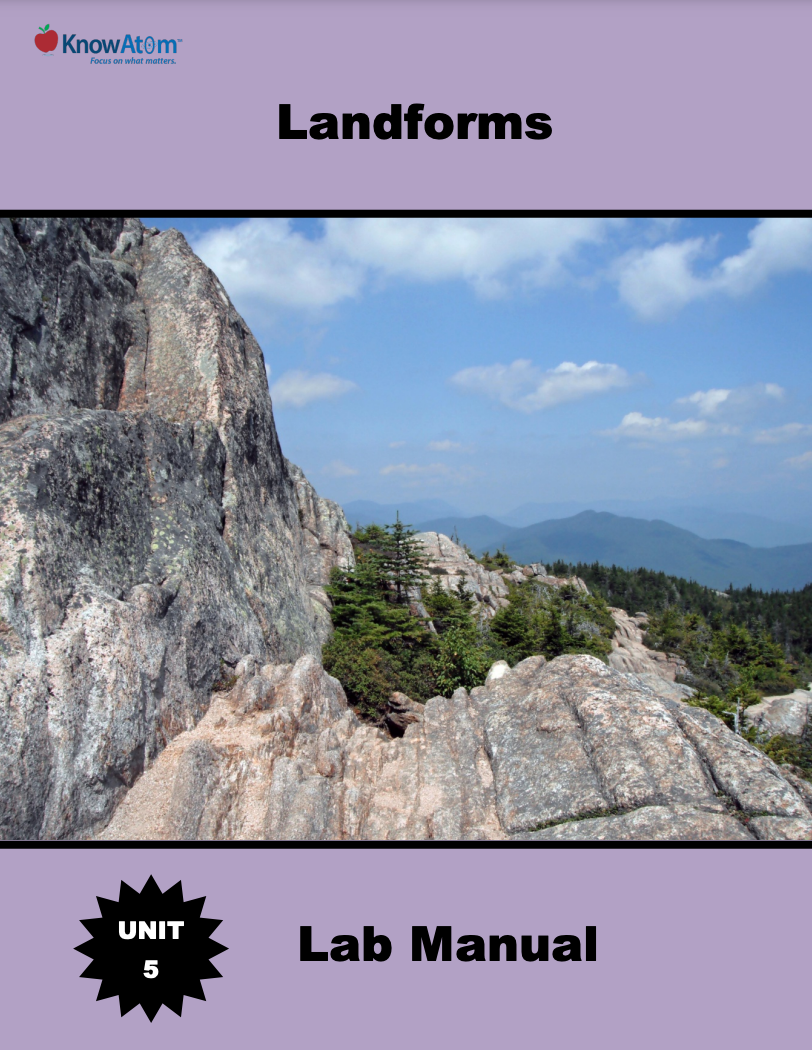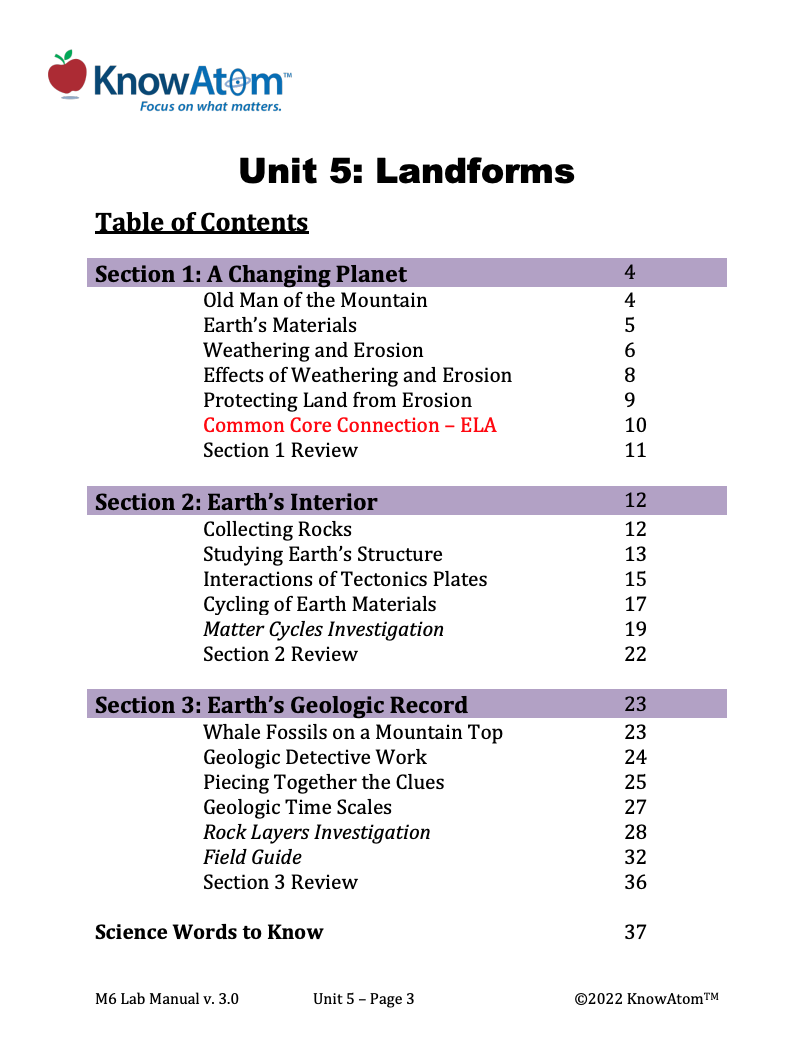.png)
In this unit, students use what they know about the relationship between energy and matter to investigate phenomena of how energy powers the cycling of Earth materials. They begin with this lesson on modeling the Earth processes that form different kinds of rock. This page provides an overview of this lesson.
.png)
In this unit, students explore phenomena of natural processes that cause Earth’s surface to change over time, analyzing how energy causes Earth’s matter to transform and cycle from one form to another. In this lesson, students investigate how Earth materials are continually being reshaped and reformed by multiple processes that are powered by energy from Earth’s hot interior and the sun. This page is a high-level extract of this lesson.
.png)
In this unit, students explore the natural processes that cause Earth’s surface to change over time, analyzing how energy causes Earth’s matter to transform and cycle from one form to another. In this lesson, they trace phenomena of how energy is transferred in chemical reactions, which allows scientists to produce ethanol to use as an alternative energy source. This page showcases each component of this lesson.
.png)
In this unit, students focus on phenomena related to Earth’s ice as they model how glaciers shape Earth’s surface, and investigate how scientists use ice cores to reconstruct Earth’s past climates and environments. In this lesson, students analyze how scientists can use the science phenomena of fossils in rock layers as evidence for past changes on Earth. This page showcases all the components of this lesson.

In kindergarten, students explore how scientists use all of their senses to ask questions and develop hypotheses about the world around them. In this unit, students have been analyzing weather patterns and seasons as well as considering the role of the sun in heating the Earth. This page is an overview of lesson 8 in which students investigate different Earth materials often found in their school’s playground or schoolyard to observe temperature variation among different surface materials when light hits them.

Kindergarten students start to develop the practices that scientists use to gather data, make and test hypotheses, and share their findings. During this unit, students will ask questions and make observations as they explore weather patterns and investigate how the sun heats different Earth materials. This page is an extract from lesson 9 where students conduct an experiment to analyze how materials are warmed differently in the sunlight than they are in the shade.

In Kindergarten, students begin to develop practices that scientists and engineers use to gather data, make and test hypotheses, and design prototypes based on evidence to solve problems. During this lesson students will ask questions, engage in Socratic dialogue, gather evidence through experimentation, and solve problems as they explore how the sun heats different Earth materials. This page is a high-level extract from lesson 10 where students build on their understanding of the sun’s energy to heat objects by conducting an experiment to investigate how color affects heat absorption.

In this first unit, students learn to differentiate between the practices of a scientist and those of an engineer. Students ask questions, make observations, and collect data as they explore weather patterns on Earth and investigate how different Earth materials are heated by the sun. During this final lesson of the unit, students act as engineers by designing a prototype that can reduce the warming effects of the sun.

In this unit, students focus on the science phenomena of processes that change Earth’s surface over time. This lesson has students modeling how Earth’s landforms can be created and then broken down by weathering and erosion. This page is a high-level extract of this lesson.

In this unit, students focus on the processes that cycle Earth materials, connecting the movement of water in the water cycle and wind with changes to Earth’s surface through weathering and erosion. In this lesson, students explore the science phenomena of how convection in Earth’s mantle causes the tectonic plates to move, creating many of Earth’s landforms. This page showcases key components of this lesson.
.webp)
In this unit, students use what they know about the relationship between energy and matter to investigate how energy powers the cycling of Earth materials. In this lesson, they analyze the phenomena of processes that form fossil fuels, which determine how these natural resources are distributed around the planet. This page highlights all the parts of this lesson.
Standards citation: NGSS Lead States. 2013. Next Generation Science Standards: For States, By States. Washington, DC: The National Academies Press. Neither WestEd nor the lead states and partners that developed the Next Generation Science Standards were involved in the production of this product, and do not endorse it.
